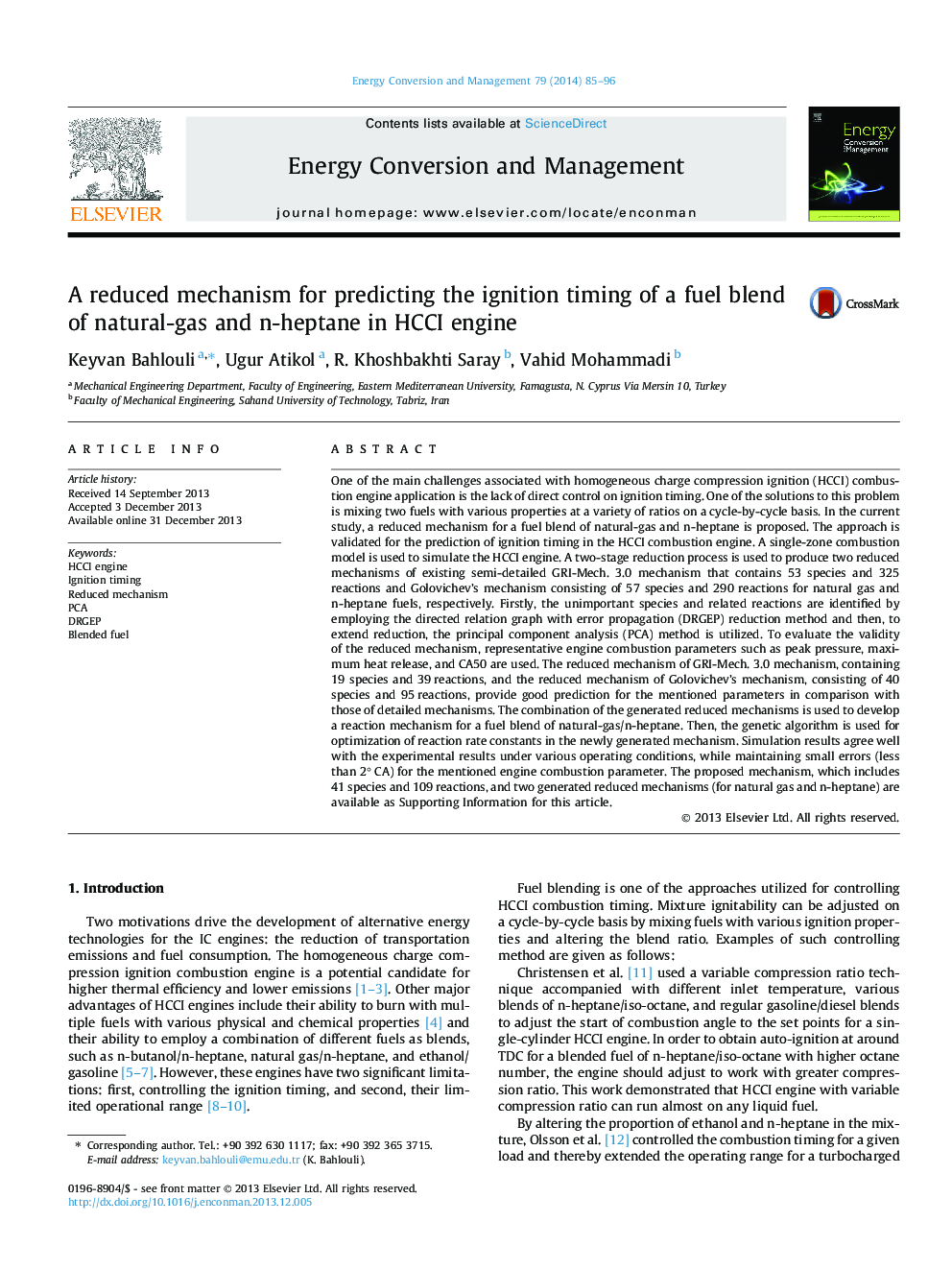| Article ID | Journal | Published Year | Pages | File Type |
|---|---|---|---|---|
| 771987 | Energy Conversion and Management | 2014 | 12 Pages |
•A two-stage reduction process is used to produce two reduced mechanisms.•The mechanisms are combined to develop a reaction mechanism for a fuel blend.•The genetic algorithm is used for optimization of reaction constants.•The developed reduced mechanism can be used to predict the ignition timing in HCCI engine for a fuel blend.
One of the main challenges associated with homogeneous charge compression ignition (HCCI) combustion engine application is the lack of direct control on ignition timing. One of the solutions to this problem is mixing two fuels with various properties at a variety of ratios on a cycle-by-cycle basis. In the current study, a reduced mechanism for a fuel blend of natural-gas and n-heptane is proposed. The approach is validated for the prediction of ignition timing in the HCCI combustion engine. A single-zone combustion model is used to simulate the HCCI engine. A two-stage reduction process is used to produce two reduced mechanisms of existing semi-detailed GRI-Mech. 3.0 mechanism that contains 53 species and 325 reactions and Golovichev’s mechanism consisting of 57 species and 290 reactions for natural gas and n-heptane fuels, respectively. Firstly, the unimportant species and related reactions are identified by employing the directed relation graph with error propagation (DRGEP) reduction method and then, to extend reduction, the principal component analysis (PCA) method is utilized. To evaluate the validity of the reduced mechanism, representative engine combustion parameters such as peak pressure, maximum heat release, and CA50 are used. The reduced mechanism of GRI-Mech. 3.0 mechanism, containing 19 species and 39 reactions, and the reduced mechanism of Golovichev’s mechanism, consisting of 40 species and 95 reactions, provide good prediction for the mentioned parameters in comparison with those of detailed mechanisms. The combination of the generated reduced mechanisms is used to develop a reaction mechanism for a fuel blend of natural-gas/n-heptane. Then, the genetic algorithm is used for optimization of reaction rate constants in the newly generated mechanism. Simulation results agree well with the experimental results under various operating conditions, while maintaining small errors (less than 2° CA) for the mentioned engine combustion parameter. The proposed mechanism, which includes 41 species and 109 reactions, and two generated reduced mechanisms (for natural gas and n-heptane) are available as Supporting Information for this article.
